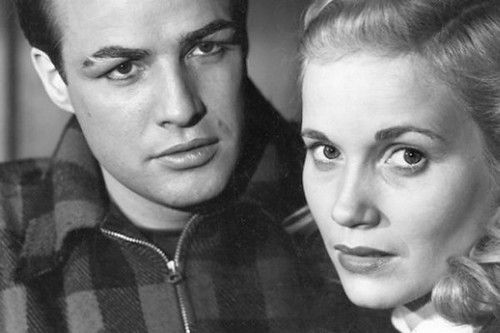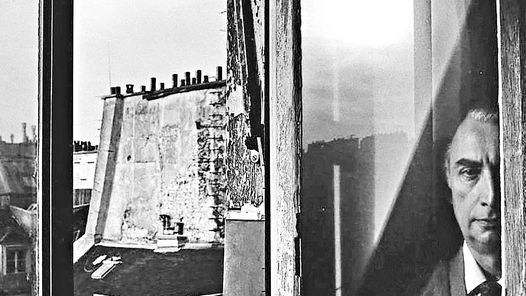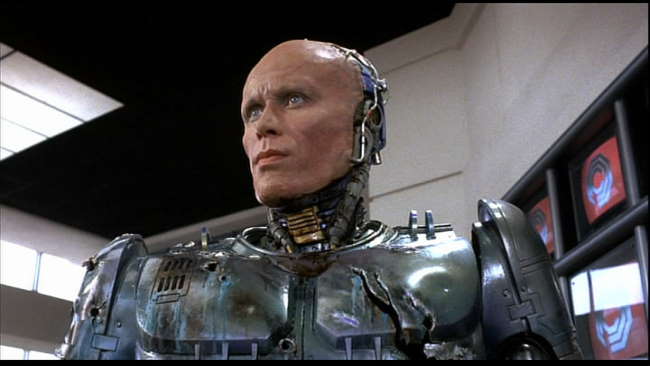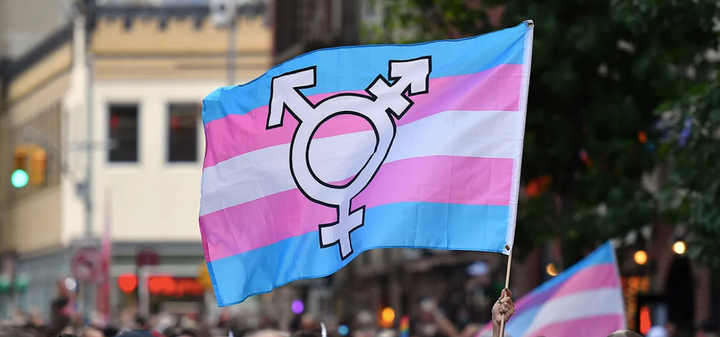Matteo Ciccognani surveys the poverty of Hollywood's attempts to portray revolutionaries and collective struggles, and considers the current state of revolutionary paradigms in popular culture.
By Matteo Ciccognani
In recent times, I’ve been haunted by a brief chapter contained in Roland Barthes’ Mythologies, a couple of pages proposing a series of rather blunt, eye-opening considerations under the title A Sympathetic Worker (initially published in 1957 as Comment Démistifier – How to Demystify). It is a brief ideological critique of On the Waterfront (Kazan, 1954), starring a poignant and combative Marlon Brando playing the rebel dockworker, Terry Malloy. In his short piece, Barthes precisely attempted to interrogate the political substance of the ‘poignancy’ and ‘combativeness’ attached to Terry Malloy’s character, without wanting to downplay Brando’s exceptional performance. The main question asked by the French semiologist seems to be: for what purposes have the narrative twists of this impactful movie been devised, and what values did they aim to convey?
The tirade implies Barthes’ dismay (and that of French Marxists) towards the director Elia Kazan, a former member of the Communist party who later repudiated his political orientation and decided to oppose those he thought were conspiring against American values in Hollywood. Indeed, Kazan denounced several colleagues to Senator McCarthy's House Committee of Un-American Activities in April 1952.
The critique formulated by Roland Barthes revolves around the alleged reactionary nature of a film that, in reality, is leftist only at its surface. The ambiguous events behind the making of On the Waterfront confirm this hypothesis. As a matter of fact, the initial stages of the project saw the eminent participation of Arthur Miller in the first screenplay, titled The Hook, about the mafia controlling dock workers’ unions in New York. However, Miller left the project as soon as he realised that the producers wanted to depict Terry Malloy’s antagonists as corrupted Communists.
Budd Schulberg took over the project and finalised a storyline that focused more on the 'evil' union leaders and not at all on the system of capitalist exploitation underlying the workers’ material and existential malaise. Doubtlessly, the protagonist’s awakening as a ‘revolutionary worker’ is never really political but more existential, when not sentimental. It occurs through the discovery of ‘Love’ for Edie Doyle (played by Eve Marie Saint), the sister of a rebellious worker killed by the ruthless trade unionists, and the ‘Church’. This action was motivated by a phoney modernist priest (interpreted by Carl Malden) drawing on the actual figure of the anti-crime Jesuit, John Corridan.

The sentimentalism behind Terry Malloy’s insurgent awareness is also crucially fed by the discovery of his brother’s hanged body, killed by the union mobsters he had been a loyal minion to. The brother’s character, played by a scornful and debased Rod Steiger, is assassinated for failing to convince Terry to remain silent when summoned to testify at a trial against the corrupt union’s head, Johnny Friendly. This passage of the storyline is particularly noteworthy, as it morally parallels Kazan denouncing his communist colleagues nested in Hollywood’s cohorts, an act that the director wished to restate as sacrosanct precisely by making a movie like On the Waterfront. Indeed, the film is a desperate attempt to acquit himself from the accusation of having betrayed his former friends.
In the background of this dramatic and entirely self-referential charade, the spectators cannot avoid observing a horde of passive, weak proletarians. The longshoremen are never animated by a genuine hatred towards their despotic union reps (let alone their employers), nor does any form of collective organising motivate them. They are either paralysed by fear of criminal retaliation or entrapped in their isolated, self-serving behaviours. Instead, their only possibility of emancipation is depicted as one of individualised redemption, almost desperately clinging to the Church’s spiritual mediation or the Capitalist State’s repairing function.
That is precisely why Barthes’s short piece, A Sympathetic Worker, argues that Kazan’s film strips radicalism and incorporates themes of revolt into hegemonic practices (favouring the Studio System profit rationale) and political discourses (akin to methodological individualism). At a time overwhelmed by the witch hunt of McCarthyism, Brando’s character could only be portrayed as a superhuman, Christ-like hero who eventually succumbs after having aggressed Johnny Friendly, the union boss, under the blows of his henchmen. Kazan utterly identifies with this saviour figure, as clarified by the moment that he makes Terry shout to his antagonist, ‘I’m glad what I done to you, ya hear that?’, referring to his testimony at the trial against Johnny Friendly – and mirroring Kazan's actual treason against his communist colleagues (for which he claimed the moral high ground). This specular doubling represents the director’s private revenge against those accusing him of being a ‘snitch’ and a ‘traitor’. In that, the whole film is a sly attempt to symbolically self-redeem in the eyes of the US public. And a manifesto of his own martyrised passion and inner turmoil, along with the cost he had to pay in terms of ‘ethical wounds’.

In the final climactic scene, when Terry regains consciousness after the fight, Father Barry and his beloved, Edie, encourage him to stand up and finish what he started. Thus, covered in wounds, he unsteadily walks towards the shipyard entrance. Though Friendly previously banned Terry from any union job and prohibited anyone from working with him for having testified against the union, he stoically guides his fellow workers toward the hangar. In the grip of the action, Terry convinces them to resist Friendly’s order and cross the sham ‘picket line’ at his side, as a cowboy-like employer nods solemnly at their arrival. The gate closes behind them and seals the reassuring finale. The corrupted trade union power is eventually smashed. The workday is on.
The critic André Bazin reminded us of how Brando already successfully embodied individual ‘revolutionary’ characters like the generous and almost naive rebellious leader in Kazan’s Viva Zapata! (1952), Mark Antony in Joseph Mankiewicz’s Julius Caesar (1953), and the spectacular imbecility of the rowdy motorcycle gang leader Johnny Strabler in The Wild One (Benedek, 1953). And he did it with a potency unrivalled since Gary Cooper’s times. Which undeniably made him stand out from the crowd of emerging actors in line to interpret roles of rugged young machomen.
However, Barthes’ critique is more stringently directed toward Marxist and Brechtian demystification. Bertolt Brecht, the German proponent of Epic Theatre, introduced a performative model based on the “estrangement” or defamiliarisation in theatrical representations. These “estranged” performances aimed to break the illusionism of classical theatrical shows, interrupting the audience’s suspension of disbelief and exposing the actual socio-material conditions usually hiding behind the fictional characters on stage. It is a form of didactic theatre that greatly influenced sociological analysis. Following this approach, Barthes invites the spectators of On the Waterfront to defocus from the singular experience of the individual worker, Terry Malloy, to broaden their horizons and observe instead the whole system of Capitalist exploitation generating conflicts and injustice affecting the people in the movie.
Yet, the specific contribution of the French analyst highlights the ideological factors at stake behind the Malloy/Kazan connection. It seems to anticipate Orson Welles’ famous interview answer, ‘Elia Kazan is a traitor!’, and directly aims at unmasking the inner motives of such a turncoat director. In hindsight, it is possible to reconnect this J’accuse as a message sent to the French institutions, a sort of antibody injection against the incipient McCarthyist waves traversing France with looming threats of cultural censorship.
Stevan Riley’s documentary Listen to Me Marlon (2015) later confirmed Barthes’ suspicion. The documentary displays a series of cassette tapes recording Brando’s most profound feelings about the film industry's commodification, the hypocrisy of acting not only narrowly speaking, but especially concerning its subserviency to the bottom line logic. In particular, his Oscar-winning performance in On the Waterfront seems to have made him frown well into the future. He always felt that being part of that film was an ‘embarrassing and disappointing experience’. We have no reason to doubt that his grim feelings were tied to the movie’s explicitly reactionary nature.
Anyway, it is essential to restate the admiration of great directors for this film, such as Scorsese, who sees it as an inspiring depiction of characters he met in real life, almost mimicking the Neorealist trait that would animate his Mean Streets (1973) and Raging Bull (1980). Without On the Waterfront, many masterpieces would probably not have seen the light of day with their accurate rendition of the specific subjectivities of their respective times. Even Orson Welles’ stormy interview ended with the commendation, ‘I have to add that he (Kazan) is a very good director’ after tarnishing the movie’s reputation forever, defining it as ‘a celebration of the informer’.
Interestingly, in another section of Mythologies, referred to as The Man in the Street on Strike, Barthes discusses the reactionary act to display the refusal to work as irrational, acausal and ultimately immoral. In the short chapter, he explains very straightforwardly the mechanisms by which bourgeois society stigmatised industrial actions and strikes. When depicting them as irrational, they label their lack of naturalness. Picket lines would perturb the natural order belonging exclusively to the ‘ordinary man’ as opposed to that of the striker’s somewhat alien reality. Such a reactionary structure is a dividing one. It is a potent, mystifying operation that disperses the collectivity into individuals. What follows is the fabrication of a mindset that promptly suspends judgement; for instance, no one should assess which side of the dispute is right or wrong. And this operates so vehemently that when a workers’ rally is in sight, it is perceived by the typical bourgeois as an isolated incident, an event that doesn’t deserve any further explanation: like in On the Waterfront, where we totally ignore the causes of the workers’ disruption.

This omission is functional in highlighting that going on strike is a scandalous activity that shouldn’t be taken seriously. Kazan’s film serves to liquidate the workers’ issue as a manipulation enacted by the corrupted trade unionists, halting labour only when they need to achieve their criminal vested interests. And yet, Barthes’s analysis goes beyond this. On the Waterfront creates a new, utterly mystified ‘causal series’, manifested through the protagonist’s initial lack of Faith and Love, which are promptly re-embraced by the events’ unfolding. These elements, not the desire to instigate a collective revolt, are the real drivers leading Terry’s transformation into a shepherd guiding the workers’ flock to emancipation from the dishonest trade unionists. The core of this mystifying act lies in creating a new series of causal signifiers motivating the protagonist and distracting the spectators from the workers’ material conditions.
For Barthes, cinema is a degraded spectacle, an emblematic leisure activity that reinforces large-scale consumption and deters insurgent mass mobilisation (Watts, 2016). It often reflects the impotence of Hollywood to imagine the ‘collective other’. Whenever there is a necessity to express the quest for justice, this is never collectivised, but instead always catalysed within the remit of individual, enlightened action. Many cases account for these models of ‘individualist revolutionaries’. To quote a few, some illustrative examples may be 12 Angry Men (Lumet, 1957), Dog Day Afternoon (Lumet, 1975), The Unforgiven (Eastwood, 1992), Rumble Fish (Coppola, 1983), Rambo (Stallone, 1972), Milk (Gus Van Sant, 2008), Joker (Phillips, 2019) and essentially any western movie. In all these very appreciable products, there is a hint of American ideology, of its ‘have-a-go-hero’ and ‘self-made man’ substance.
Hollywood cinema is opposed to collective riots. It never hatched stories where the stars disappear in the meanders of organised labourers’ revolt like in the Italian I compagni (The Comrades, Monicelli, 1963), La Battaglia di Algeri (The Battle of Algiers, Pontecorvo, 1966) and La Classe Operaia Va in Paradiso (The Working Class Goes to Heaven, Petri, 1971). It never reaches the choral insurgent notes of Ken Loach’s films on the Spanish Civil War and the Irish Revolution (Land and Freedom, 1995; The Wind that Shakes the Barley, 2006). At most, it could aspire to some form of concrete progressivism through the anarcho-individualist slants of John Cassavetes. Or, retrospectively, via rare gems, like Tod Browning’s Freaks (1932), the story of a gang of disabled performers exploited by ruthless circus artists who finally overthrew their subjugated state through a joyful macabre orgy against power. Worth mentioning are Martin Ritt’s The Molly Maguires (1970), Norma Rae (1979), and the TV movie Harlan County War (Bill, 2000), examples that nonetheless do not reach the aesthetic summits of European and Global cinema in the thematics at hand.

Bodroghkozy’s analysis (2002) helps us frame how big American productions systematically failed to show the desires of collective rebellious youth on the screen. Contrarily, the Studio System often incorporated ready-to-consume versions of these topics into the ‘youthpix’ model. It was a refined marketing strategy or a clumsy attempt to intercept the insurrectionary whims of the early 70s students. Renowned directors such as Antonioni were unwittingly inscribed within this new form of generational portrayal. Zabriskie Point (1970) is a notable mention. Similar films often displayed student rebellion and campus upheavals to attract paying audiences between sixteen and thirty years old. They were produced over a handful of months to create ad hoc blockbusters.
In spite of that, the primary concern of producers behind the likely long-term failure of this marketing rationale was twofold. The real protests inspiring these products were deemed temporary and to be resolved shortly. By the time they were shot and distributed, they might not have attracted this young target audience anymore. The second problem emerged when Nixon invaded Cambodia, in the context of the Vietnam War, and after the four Kent University students were killed during a demonstration, in April and May 1970. Against the backdrop of these events, the in-house executives thought these movies could radicalise viewers and trigger uncontrolled social unrest.
Hollywood failed to seize the opportunity to depict something meaningful about the surrounding atmosphere of socio-political transformation in the Western world. Concerned about their potential to destabilise the status quo and the established order, ‘youthpix’ began to detach from their political tone. They instead embarked on plots focusing on identity and existential crises. Films previously devised to explore thematics akin to students’ riots and dissident social movements were hijacked towards nearly ‘coming-of-age’ plots in the style of The Graduate (Nichols, 1967), where police riots had to be shown in the guise of a colourful background noise, a contextual instability that could, at best, allegorically mirror the emotional, individual states of these young protagonists. In these films, personal radicalisation is never intellectual but often physical. The Strawberry Statement (Hagmann, 1970) and Getting Straight (Rush, 1970) coherently align with this thesis. In the first, the protagonist, a college student, participates in campus riots, but he is more attracted to women than political ideals. In the second, the main character is dragged by his girlfriend into various demonstrations and eventually finds himself attuned to the riots uniquely as a mark of his eccentricity rather than signaling a genuine activist epiphany.
Many newspaper articles promptly criticised how, in these movies, riots were merely shot for aesthetic graphic interest rather than to prove a political point about police brutality and the repression of freedom of expression. In some situations, these cash cow productions were so bold that they generated severe backlashes in the broader public. Warner Bros’ monetisation of the film Woodstock (Wadleigh, 1970) provoked manifold protests, picketing, and bombing threats. The central reason was the 4–5 dollar ticket, the most expensive Hollywood release in history until that moment, and unaffordable even for the film’s actors.
As a reaction, producers and distributors began to claim overtly that these films were not about social protest but rather individual identity crises. The ideological stratagem underlying ‘youthpix’ could not be hidden anymore. And it worked, but not for long; in 1971 when the interest of the Studio System for campus revolt films met a definitive setback. Hollywood’s difficulty in issuing movies on political rebellion indicates that, albeit lucrative, this genre could not offset the troubles of socio-cultural unrest determined by tackling topics so sensitive to the audience of the time.
Nonetheless, what lingered on was the architecture of ‘soft technologies’ fomenting individual ‘care of the self’ and social atomisation, over years and years of sedimented production in the cultural industry. The eighties and nineties were not immune to these mechanisms. Even apparently ‘counter-cultural’ films like Robocop (Verhoeven, 1988), Glengarry Glen Ross (Foley, 1992) and Wall Street (Stone, 1997) reproduce the hegemonic values of their time. Their unreformable individualistic tone is anything but counter-cultural. In those films, the villain is indeed the corporation and greedy big business is portrayed as the enemy of the people. Corporations are uncaring, impersonal and amoral. But if we reflect on it for a minute, we discover no friction with the dominant Neoliberal creed. It is always about individuals who are exploited and finally bounce back using the same, or worse, means as their persecutors. The obstacles are often exterior or, at best, show pathological derailments of shared cultural values whose key aspects are never really put into discussion.
From the particular American cultural perspective, this feeds on the mythology of finding an enemy, a source of fear, insecurity, and anxiety against which the nation’s fragile identity must be defended. Certainly, some of these films often criticise the dehumanised lives of salespersons and stock traders or the highly-competitive dynamics leading to fire and rehire practices in the workplace up to the extreme case of Robocop, where an unconscious dead body is exploited to create a Frankenstein-like police officer. But, simultaneously, they represent executive board rooms and organisational dynamics pretty standardly, without offering subversive reconstitutions of public and working spaces. Ultimately, they vigorousely foreground the status symbols they purported to criticise in the first place. The hiatus of the following period, bridging the 90s and the 2000s, was brilliantly filled up by Mel Gibson’s legacy, whose nauseating rhetoric I promptly refuse to reproduce here.

We might concur that our days are littered with strong individualising messages too; these are usually pontificated by masculine heroes such as Andrew Tate and Jordan Peterson (along with their anti-intersectional female version, Candace Owens). Purely inventive conjectures can be made on how Roland Barthes might have sagaciously debunked these new mythologies. The times of Brando/Malloy’s romantic-macho rebels are long gone. If, in the 70s, a young student could be lured into collective action by sexual desire or the quest for belonging, now the situation is even more convoluted; today, the typical male adolescent is trapped by the impulse to develop the best entrepreneurial, crypto-currency/NFT-laden mode of self-empowerment to evolve from caterpillar incel (involuntary celibate) into the most envied butterfly alpha Top-G. The alternative is to become a leftist hikikomori, a rather withdrawn social justice warrior.
These subjective paths are the latest result of permanent manufacturing processes at the core of the cultural industry. As we have seen, they crystallised into models persisting within Hollywood production for decades. Similar pervasive messages have been able to vampirise other media and forms of expression. Today’s American films reproduce these same impasses, pitching freshly squeezed restrictions on the imaginary. And yet, these restrictions must be kept in check with a view to releasing uncharted radical horizons and new inspiring ways of being.
A corollary question to this series of considerations would thus be: are we now approaching, with Oppenheimer, an ideological era of ‘failed’ individualist revolutionaries and, with Barbie, a highly-dividing process of woke, ever-re-captured market segmentation of public opinion?
To posterity the arduous sentence.
Bibliography
Barthes, R. (2012) Mythologies. Translated by Richard Howard and A. Lavers. New York: Hill and Wang.
Bodroghkozy, A. (2002) ‘Reel revolutionaries: an examination of Hollywood’s cycle of 1960s youth rebellion films’. Cinema Journal 41(3), pp. 38-58.
Watts, P. (2016) Roland Barthes’ Cinema. Oxford: Oxford University Press.
Matteo Ciccognani is a lecturer in Management and Organisation at the University of Leicester. His research interests revolve around film theory, organisational performance in narratives and movies, self-reflexivity in figurative art, film and media, cinema and surveillance, and corporate-sponsored films.






Comments ()